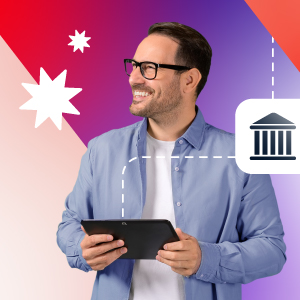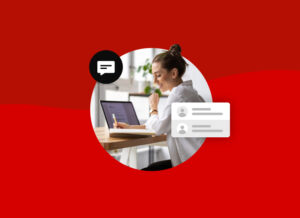Since the founding of the U.S. Government Accountability Office (GAO) in 1921, efficiency has been a focus of the Federal Government. According to the legislation, the GAO aims to provide “greater economy and efficiency in the conduct of public service” and has been integral in the effort to aid our Government to do more with less. Today, this mission continues with the adoption of modern technologies to expand Government outreach. The adoption of modern technology allows for increases in interactions such as website visits, applications for services and public outreach. The hope is that building on these foundations of new technology will meet and improve public expectations (Pew Research).
Designing Trusted Digital Services
Today’s digital world has brought about a rising set of expectations from the constituents that public agencies work with. People now expect their Public Sector experiences to be on par with their favorite online retailers. This is likely why digital services are a priority of both the “America by Design” Executive Order and State CIOs (NASCIO 2025). To meet these expectations and create trusted services, Government websites need their digital offerings to be intuitive, personalized and responsive to the needs of every user. Making every interaction count is what is important. Everything from the smallest information request to the most complex, multi-year service transactions should be built with the user in mind. These user-centered designs can ensure that agencies construct the kinds of welcoming, trusted experiences that users want.
The potential for citizens to interact with their Governments in the digital space is limitless, and creating personalized content is pivotal to meeting those expectations. Trusted, engaging experiences are built on equal pillars of data, content and meaningful delivery. However, they begin with a modern foundation to meet the demands necessary for true personalization.
Technology and Workforce Modernization

Modernization is about streamlining outdated processes that have long hindered efficiency. Many Government websites still struggle with outdated designs and inconsistent content, yet the website of a Government agency is often the first point of contact for constituents seeking information or services. Therefore, the America by Design EO requires agencies to “prioritize improving websites…that have a major impact on Americans’ everyday lives” (Executive Order). With a well-designed website that is easy to navigate, constituents can quickly find the information that they need.
After agencies inform constituents about services, they must enroll them in the appropriate ones. Enrollment processes have traditionally been slow and time-consuming, often relying on paper-intensive systems. To reduce administrative burdens and improve data collection accuracy, agencies must transition from manual, paper-centric workflows to digital tools. When employees aren’t bogged down by administrative cleanup work, they have more time to work on tasks that make a bigger impact on their agencies’ missions.
This means that modernization is also about enabling the workforce to adapt to this new digital foundation. Efficiency here involves enhancing communication between employees, aligning project tasks with agency goals and providing transparency into this progress. Agencies that foster a culture of collaboration and trust in their workforce will see that workforce more empowered to deliver efficient results that align better with overall goals.
Looking Forward
Today, efficiency has expanded beyond the scope of the GAO itself and has been integrated into nearly every aspect of the Public Sector and how residents think about it. By prioritizing intuitive, personalized and efficient digital services that meet public expectations, agencies can increase trust in our Government.
Check out this on-demand webinar series to learn how Adobe’s digital experience solutions can help your agency modernize public services, digitize internal workflows and accelerate content delivery, while ensuring compliance and protecting sensitive data.







